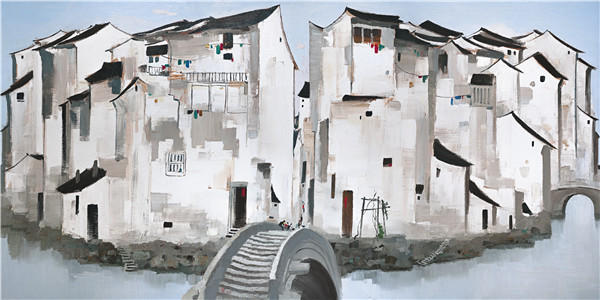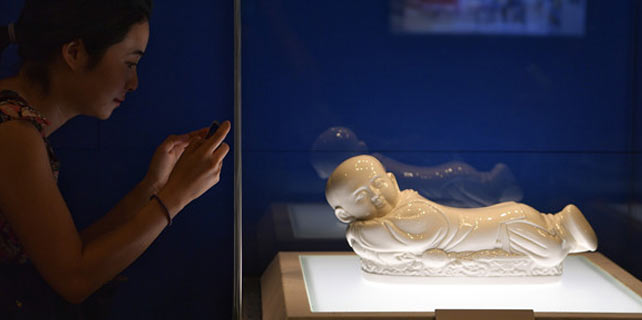Crossing the border to paint a picture of success
 |
|
Last year, Wu Guanzhong's The Zhou Village sold for HK$236 million in Hong Kong. [Photo provided to China Daily] |
Sustained relationships
Because they follow a different business model to Western auction houses, mainland outfits do not seem unduly anxious about attracting media attention. Many of their sales are achieved largely by building a relationship of confidence and trust with clients that is sustained over years.
In addition to having good guanxi (relationships) with patrons it helps to cater to an audience that is not necessarily looking to buy big-ticket pieces.
"Whereas Christie's and Sotheby's are more focused on just selling the top end of the market, we encourage all kinds of objects to be sold through us," Wilson said.
Although the leading mainland auction houses, such as China Guardian and Poly, now have bases in different parts of the world, they deal primarily in Chinese art and mainly cater to a Chinese audience.
"Typically, our clients are mainland Chinese with domiciles in other places. They buy with the money they earn abroad and keep the pieces outside of the mainland. And Hong Kong, of course, is a great place to store art. There's no tax to pay and it's easy to transport the pieces from here," Wilson said, referring to the city's advantage as the world's largest container port.
Alex Chang, managing director of Poly Auction Hong Kong, attributed the stellar rise of his company's profile in Hong Kong to the city's strategic location and general openness. Doing business in the city helps him stay connected with his network of buyers in "Taiwan, Southeast Asia, Japan and South Korea, as well as a growing number of collectors from Europe and the United States". According to Chan, the city's "inclusive culture" is conducive to "healthy interactions between art galleries, art fairs and auction houses, which will further expand the market".
The exposure to this confluence of art and ideas from around the world has inspired mainland auction houses to broaden their ranges. Chang said Poly has been offering "artists from Japan, South Korea and Southeast Asia, in which more and more Chinese and Asian collectors are showing interest", while Wilson has plans to introduce mid-20th century Scandinavian furniture created by Danish designer Hans Wegner who "did a couple of chairs based on Chinese designs".









